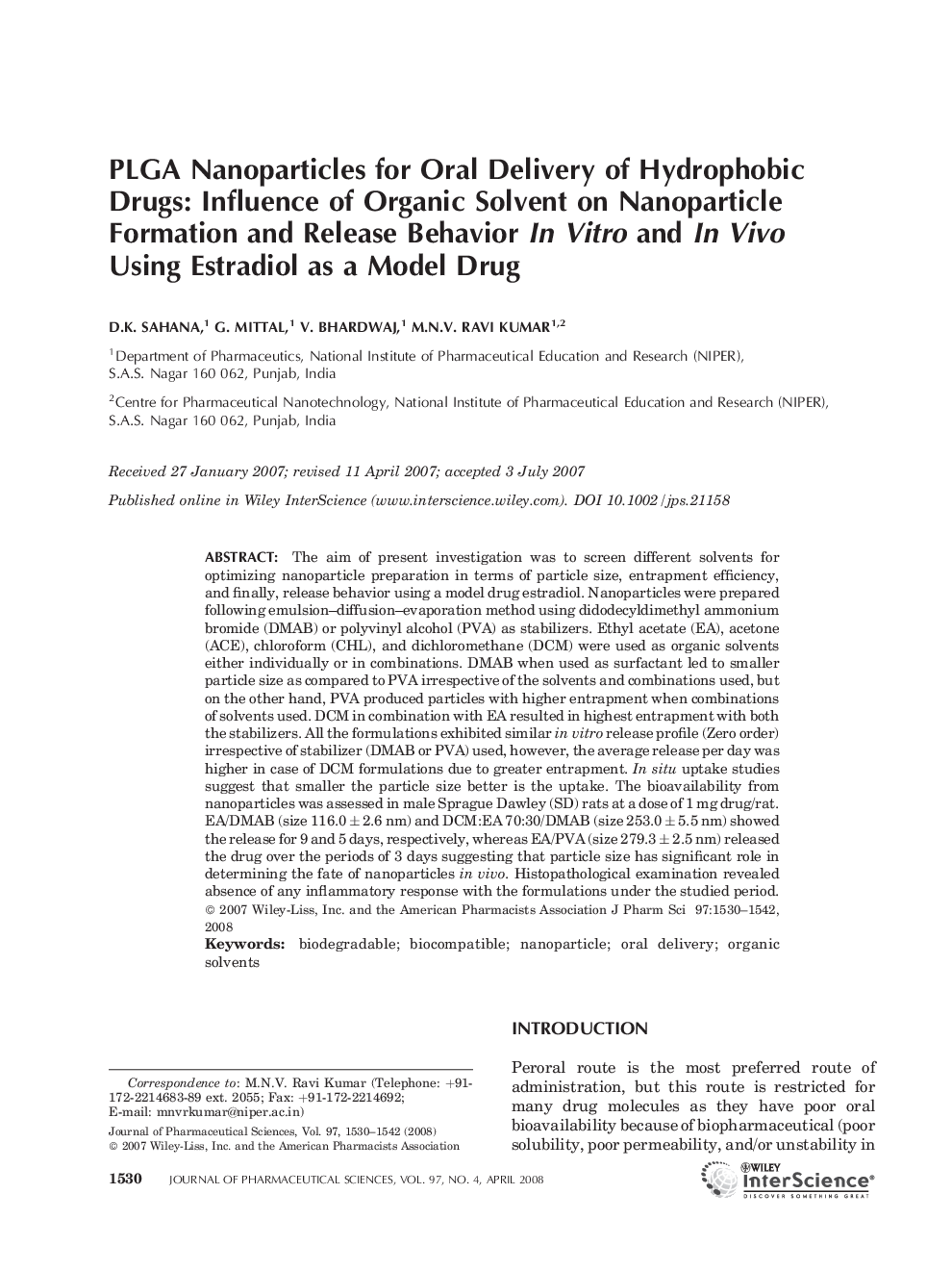| کد مقاله | کد نشریه | سال انتشار | مقاله انگلیسی | نسخه تمام متن |
|---|---|---|---|---|
| 2487517 | 1114419 | 2008 | 13 صفحه PDF | دانلود رایگان |
عنوان انگلیسی مقاله ISI
PLGA Nanoparticles for Oral Delivery of Hydrophobic Drugs: Influence of Organic Solvent on Nanoparticle Formation and Release Behavior In Vitro and In Vivo Using Estradiol as a Model Drug
دانلود مقاله + سفارش ترجمه
دانلود مقاله ISI انگلیسی
رایگان برای ایرانیان
کلمات کلیدی
موضوعات مرتبط
علوم پزشکی و سلامت
داروسازی، سم شناسی و علوم دارویی
اکتشاف دارویی
پیش نمایش صفحه اول مقاله

چکیده انگلیسی
The aim of present investigation was to screen different solvents for optimizing nanoparticle preparation in terms of particle size, entrapment efficiency, and finally, release behavior using a model drug estradiol. Nanoparticles were prepared following emulsion-diffusion-evaporation method using didodecyldimethyl ammonium bromide (DMAB) or polyvinyl alcohol (PVA) as stabilizers. Ethyl acetate (EA), acetone (ACE), chloroform (CHL), and dichloromethane (DCM) were used as organic solvents either individually or in combinations. DMAB when used as surfactant led to smaller particle size as compared to PVA irrespective of the solvents and combinations used, but on the other hand, PVA produced particles with higher entrapment when combinations of solvents used. DCM in combination with EA resulted in highest entrapment with both the stabilizers. All the formulations exhibited similar in vitro release profile (Zero order) irrespective of stabilizer (DMAB or PVA) used, however, the average release per day was higher in case of DCM formulations due to greater entrapment. In situ uptake studies suggest that smaller the particle size better is the uptake. The bioavailability from nanoparticles was assessed in male Sprague Dawley (SD) rats at a dose of 1 mg drug/rat. EA/DMAB (size 116.0â±â2.6 nm) and DCM:EA 70:30/DMAB (size 253.0â±â5.5 nm) showed the release for 9 and 5 days, respectively, whereas EA/PVA (size 279.3â±â2.5 nm) released the drug over the periods of 3 days suggesting that particle size has significant role in determining the fate of nanoparticles in vivo. Histopathological examination revealed absence of any inflammatory response with the formulations under the studied period. © 2007 WileyâLiss, Inc. and the American Pharmacists Association J Pharm Sci 97:1530-1542, 2008
ناشر
Database: Elsevier - ScienceDirect (ساینس دایرکت)
Journal: Journal of Pharmaceutical Sciences - Volume 97, Issue 4, April 2008, Pages 1530-1542
Journal: Journal of Pharmaceutical Sciences - Volume 97, Issue 4, April 2008, Pages 1530-1542
نویسندگان
D.K. Sahana, G. Mittal, V. Bhardwaj, M.N.V.Ravi Kumar,